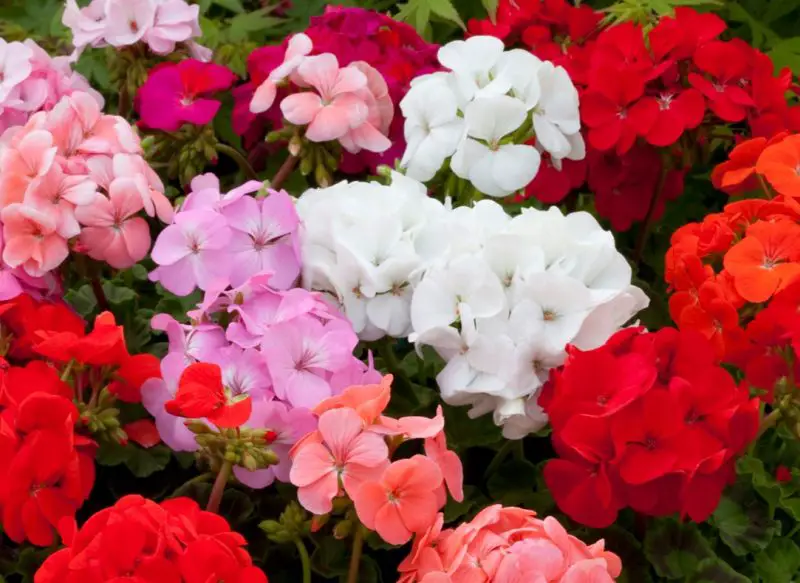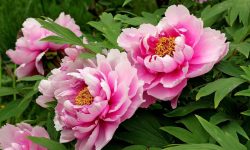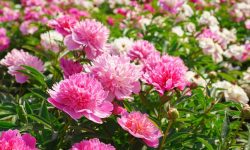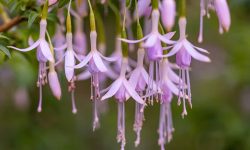Geraniums are one of the most beloved and versatile flowering plants in both home gardens and indoor spaces. Known for their brilliant clusters of blooms, lush foliage, and ability to thrive in a wide range of environments, geraniums have become a favorite among gardeners of all skill levels. Whether you’re growing them in window boxes, hanging baskets, or garden beds, providing proper care ensures that your geraniums will bloom vibrantly throughout the growing season.
This comprehensive guide will walk you through everything you need to know about caring for geraniums—from choosing the right variety to overwintering tips—so your plants can thrive year-round.
Understanding Geranium Types

Zonal Geraniums
Zonal geraniums are perhaps the most common variety, easily identified by the darker bands or “zones” on their leaves. These plants are prized for their upright growth habit and large, rounded flower clusters in vibrant colors.
Ivy Geraniums
Trailing and elegant, ivy geraniums are ideal for hanging baskets and window boxes. Their glossy leaves and cascading blooms make them a beautiful option for vertical gardening.
Regal or Martha Washington Geraniums
Regal geraniums offer lush, showy flowers and serrated foliage. They are slightly more temperamental than other types, preferring cooler temperatures and consistent care.
Scented-Leaved Geraniums
Grown more for their aromatic foliage than flowers, these geraniums release delightful scents such as rose, lemon, mint, and even chocolate. They’re popular for making potpourri or natural mosquito repellents.
Providing the Right Light Conditions
Full Sun is Best
Geraniums thrive in full sun. Aim for at least six to eight hours of direct sunlight daily. This exposure promotes stronger stems and abundant blooms. If your geraniums are indoors, place them near a south- or west-facing window to maximize light.
Adjusting Light for Indoor Growing
Indoor geraniums may require supplemental lighting during shorter winter days. Using a grow light or fluorescent bulb can help maintain healthy growth and flowering during low-light seasons.
Soil and Potting Requirements
Well-Draining Soil
The key to healthy geraniums is soil that drains well. A mix containing peat, perlite, and compost provides the right texture. Avoid heavy soils that retain water, as this can lead to root rot.
Choosing the Right Container
When potting geraniums, select containers with adequate drainage holes. Terracotta pots are excellent because they allow moisture to evaporate more easily, reducing the risk of overwatering.
Watering Geraniums Correctly
Avoid Overwatering
Geraniums prefer slightly dry conditions. Water only when the top inch of soil feels dry to the touch. When you do water, be thorough—allowing excess water to drain from the bottom of the pot.
Seasonal Watering Adjustments
In summer, geraniums may require more frequent watering, especially in containers. During winter or dormancy, reduce watering significantly to prevent soggy roots.
Fertilizing for Maximum Bloom
Choose the Right Fertilizer
Use a balanced liquid fertilizer (e.g., 10-10-10 or 20-20-20) every 2 to 4 weeks during the active growing season. Avoid high-nitrogen formulas as they encourage leaf growth at the expense of flowers.
Organic Alternatives
Compost tea, fish emulsion, and worm castings are excellent organic options that support flowering and overall plant health without synthetic chemicals.
Pruning and Deadheading
Encourage Continuous Blooms
Regular deadheading—removing faded flowers—promotes continued blooming. Snip the entire flower stem, not just the petals, to stimulate new growth.
Shape and Rejuvenate Plants
Pinch back leggy stems and remove yellowing leaves to maintain a bushy, compact shape. More aggressive pruning in early spring or late summer can refresh tired plants.
Managing Common Pests and Diseases
Pests to Watch For
Aphids, whiteflies, and spider mites are the most common pests. If detected, spray your plants with a mix of water and mild dish soap or use insecticidal soap.
Disease Prevention
Geraniums are susceptible to fungal diseases like botrytis and rust, especially in humid conditions. Ensure proper spacing, good air circulation, and avoid wetting foliage when watering to reduce risk.
Overwintering Geraniums
Bring Indoors Before Frost
Geraniums are sensitive to frost. In regions with cold winters, bring potted plants indoors before nighttime temperatures drop below 45°F (7°C).
Dormant Storage Method
Cut the plant back, remove most of the soil, and store bare-root geraniums in paper bags in a cool, dark place. This method allows them to go dormant and be revived in spring.
Growing Indoors Through Winter
Alternatively, treat your geraniums as houseplants during the winter. Place them in a sunny window and reduce watering and feeding until spring returns.
Propagation Techniques
From Stem Cuttings
Geraniums are easy to propagate. Take a 4-6 inch cutting from a healthy stem, remove lower leaves, and place in moist soil or water until roots develop. Transplant once rooted.
Timing and Success Rate
Spring and early summer are ideal for propagation, when plants are actively growing. With proper care, most cuttings root within 2–4 weeks.
Encouraging Reblooming
Provide a Rest Period
If your geraniums slow down in blooming, they may need a rest. Allow the plant to rest by reducing watering and feeding for a few weeks before resuming normal care.
Check Light and Fertilizer
Lack of blooms can often be traced to insufficient light or imbalanced nutrients. Ensure your plant gets enough sun and that your fertilizer isn’t too high in nitrogen.
FAQ About Geranium Care
What is the best location to grow geraniums?
Geraniums thrive in full sun and well-ventilated areas. Outdoors, place them where they receive at least 6 hours of sunlight each day. Indoors, a bright south- or west-facing window works best. Without adequate sunlight, geraniums may become leggy and produce fewer flowers.
How often should I water my geraniums?
Watering frequency depends on the season and where the plant is located. During the growing season, water when the top inch of soil feels dry. In hot summer months, outdoor plants may need water every 1–2 days. In cooler or indoor settings, watering once every 5–7 days is typically enough. Avoid letting the soil stay soggy, which can lead to root rot.
Why are the leaves on my geranium turning yellow?
Yellowing leaves can result from several factors: overwatering, poor drainage, lack of sunlight, or nutrient deficiency. Check soil moisture first—if it’s too wet, reduce watering. If the soil is dry but the plant is still yellowing, inspect for light exposure and fertilization habits. Also, consider if the plant is root-bound and needs repotting.
Do geraniums need to be fertilized regularly?
Yes, fertilizing encourages more vibrant blooms and healthy foliage. Use a balanced fertilizer every 2–4 weeks during active growth (spring and summer). Avoid fertilizers high in nitrogen alone, as they may promote leaf growth at the expense of flowers. Organic alternatives like compost tea or fish emulsion can also be effective.
Can geraniums grow indoors all year?
Absolutely. Geraniums make great houseplants as long as they receive plenty of light. Keep them in a bright window, rotate them regularly to prevent leaning, and avoid placing them near cold drafts or heating vents. Reduce watering and fertilizer during the winter months when growth slows down.
How do I get my geranium to bloom again?
To encourage reblooming, remove spent flowers regularly (deadheading), provide sufficient light, and ensure your plant isn’t pot-bound. If it’s not blooming despite good care, reassess the light exposure and feeding schedule. A phosphorus-rich fertilizer can stimulate new blooms.
Can I grow geraniums from cuttings?
Yes, geraniums are easily propagated from stem cuttings. Choose healthy, non-flowering stems, trim to 4–6 inches, remove lower leaves, and root in water or moist potting mix. New roots usually form within 2–4 weeks. Once rooted, transplant them into pots or garden beds.
How do I overwinter my geraniums?
Before the first frost, bring your potted geraniums indoors or dig them up to store them dormant. For dormant storage, remove excess soil, trim back the plant, and place it in a cool, dry, dark place like a basement or garage. Water just enough to prevent complete drying. You can also keep them growing indoors through the winter with reduced watering and plenty of light.
Are geraniums toxic to pets?
Geraniums (Pelargonium species) can be mildly toxic to cats and dogs if ingested. Symptoms may include vomiting, lethargy, or skin irritation. It’s best to keep geraniums out of reach of curious pets or choose non-toxic alternatives for pet-friendly homes.
Conclusion: Year-Round Geranium Success
With the right care, geraniums can provide long-lasting color and foliage both indoors and out. Their forgiving nature and beautiful blooms make them a perfect choice for gardeners of any level. By understanding their light, soil, water, and seasonal needs, you’ll enjoy healthy, vibrant geraniums that flourish all year long.
From propagation to pruning, overwintering to fertilizing, the techniques in this guide offer everything you need to know about keeping your geraniums lush, flowering, and thriving.






